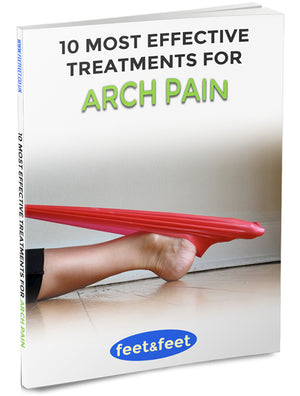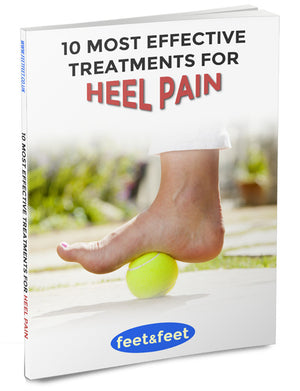7 Best Home Remedies For Plantar Fasciitis

The first step to relieving heel pain connected to plantar fasciitis is by identifying it and making simple changes to your lifestyle and diet.
The following 7 best home remedies for plantar fasciitis will provide short and long-term relief without the need to purchase expensive drugs or making regular trips to the doctor.
1. Apply Essential Oils
Applying essential oils to the soles of your feet - especially the heel area - is a popular home remedy for plantar fasciitis, and there is a range of oils with anti-inflammatory properties to choose from, including lavender, rosemary, peppermint, frankincense and eucalyptus.
You can apply these during a deep massage once or twice a day, making sure to mix them with a base oil for easy application.
Another method is to mix some warm water with a few drops of your chosen essential oil and Epsom salts and soak your feet every night until the pain goes away.
While there is no research on the efficacy of essential oils regarding plantar fasciitis, two studies have examined the anti-inflammatory effects of two of them, frankincense and lavender, and found positive results.
2. Apply an Ice Pack
Applying an ice pack is one of the simplest ways to reduce the inflammation caused by plantar fasciitis.
If you have some frozen peas or ice that you can crush up and put in a bag, place it on the base of your foot for around 20 minutes, and repeat this process four times throughout the day.
As it's an analgesic, the cold will also numb the inflamed tissues, providing immediate pain relief. Thus, any method that reduces the temperature of the affected area will help, including rolling an ice cube or frozen water bottle along the arch of your foot or soaking it in icy water.
This is one of the simplest and best ways to treat plantar fasciitis with a high level of effectiveness.
3. Wear Day and Night Splints
During periods of rest or sleep, the connective tissues in the feet tend to contract and shorten as we naturally curl our toes, but re-stretching them when we plant our feet can be particularly painful during a case of plantar fasciitis.
To prevent this, you can use splints to keep the tissues stretched during the night or after strenuous exercise.
Nowadays, these splints are less cumbersome and more comfortable, allowing you to easily move short distances and get a good night's sleep.
4. Get Good Rest
Plantar fasciitis can be caused by putting excessive strain on the plantar fascia ligaments during exercise – ligaments that help to absorb the forces exerted on the foot whilst running, jumping or walking.
Although the pain may subside as you move about, a good rest is, nevertheless, an effective remedy in many cases of this condition.
Those of you who would rather stay active during recovery, however, can take part in low impact activities such as swimming, cycling and yoga, allowing you to keep in shape while helping strained and inflamed ligaments to heal.
5. Improve Your Diet
Improving your diet helps to tackle this condition in two ways. A healthy diet will, first and foremost, aid you in losing weight and, therefore, reduce the strain on those important shock absorbing ligaments as you plant your feet.
In addition to this, a balanced diet is important for the healing process. Consuming food known to have anti-inflammatory properties is a good place to start.
These include seeds and nuts rich in Omega 3 and monounsaturated fats, such as pumpkin seeds, flax seeds, Brazil nuts and almonds; fruit and vegetables that provide antioxidants and vitamins – namely broccoli, spinach, squash and strawberries; and healthy proteins, like oily fish, sea food and lean poultry.
6. Drink Healthier
What we drink is often overlooked in a healthy diet, even though things like shakes and fruit juices can be a quick and easy source of nutrients, while, conversely, some types of beverages are a common source of unhealthy ingredients.
Cutting out alcohol, sugary drinks and caffeine especially is a good place to start in improving your diet and relieving the pain caused by plantar fasciitis.
Replacing these unhealthy drinks with low-sodium vegetable juices, low-fat milk, herbal teas or simply more water will ensure that you have the right nutrients in you to aid the healing process in muscles and tissues.
7. Perform Low-impact Exercises
Low-impact exercises specific to plantar fasciitis are ideal for those of you who want to stay active but mustn’t put added strain on your plantar fascia tissues.
Swimming, cycling and kayaking are popular examples of activities that rely more on the upper body and leg muscles and are, therefore, ideal for maintaining or losing weight safely while you recover.
Swimming, in particular, is often recommended by physiotherapist to treat patients in a controlled way. For added precaution, however, it's important to stretch the muscles in the feet and calves after resting, as well as moves the feet slowly in a circular motion and curl the toes. Doing so will help to prevent micro tears.





Comments
Leave a comment